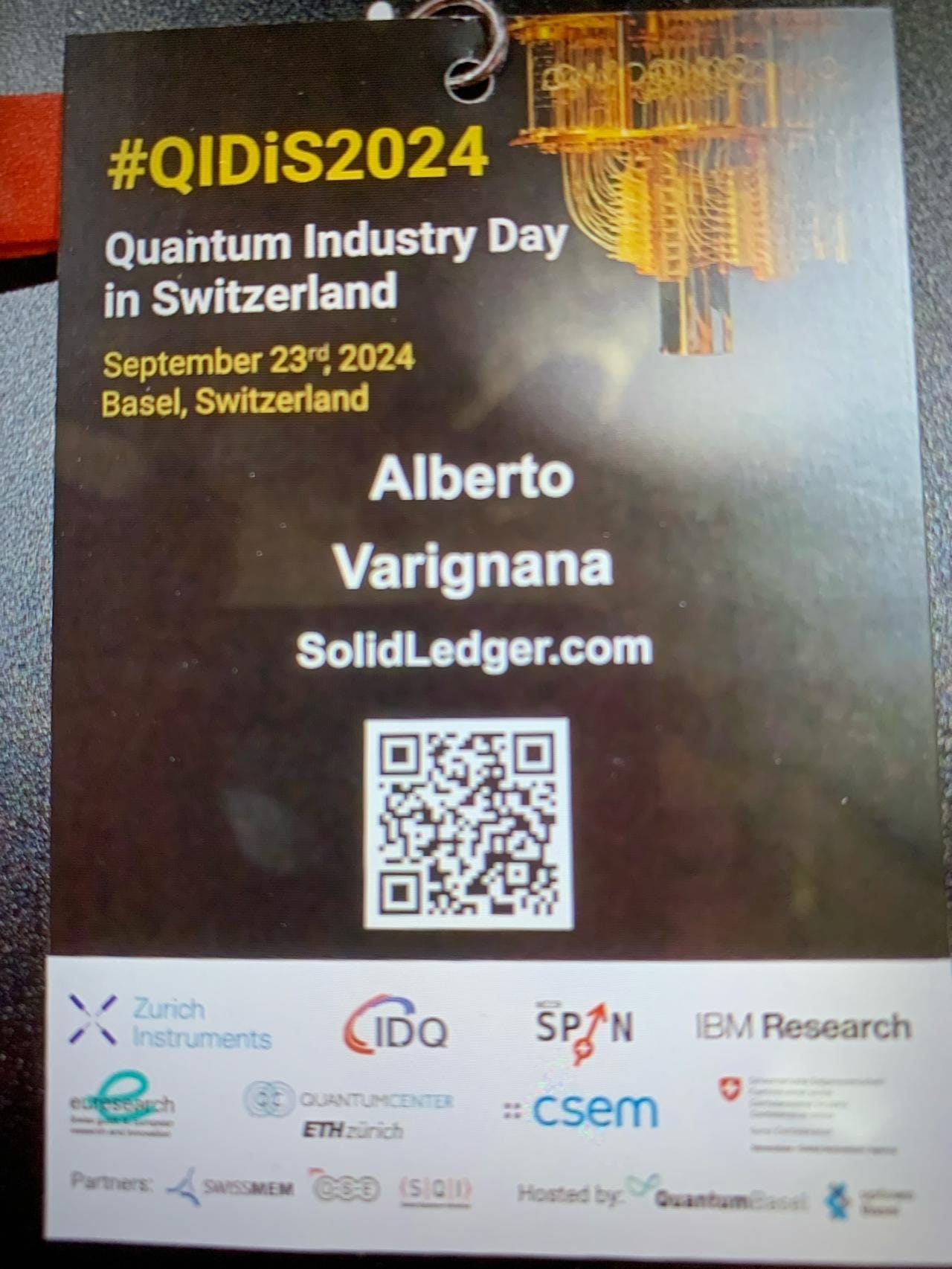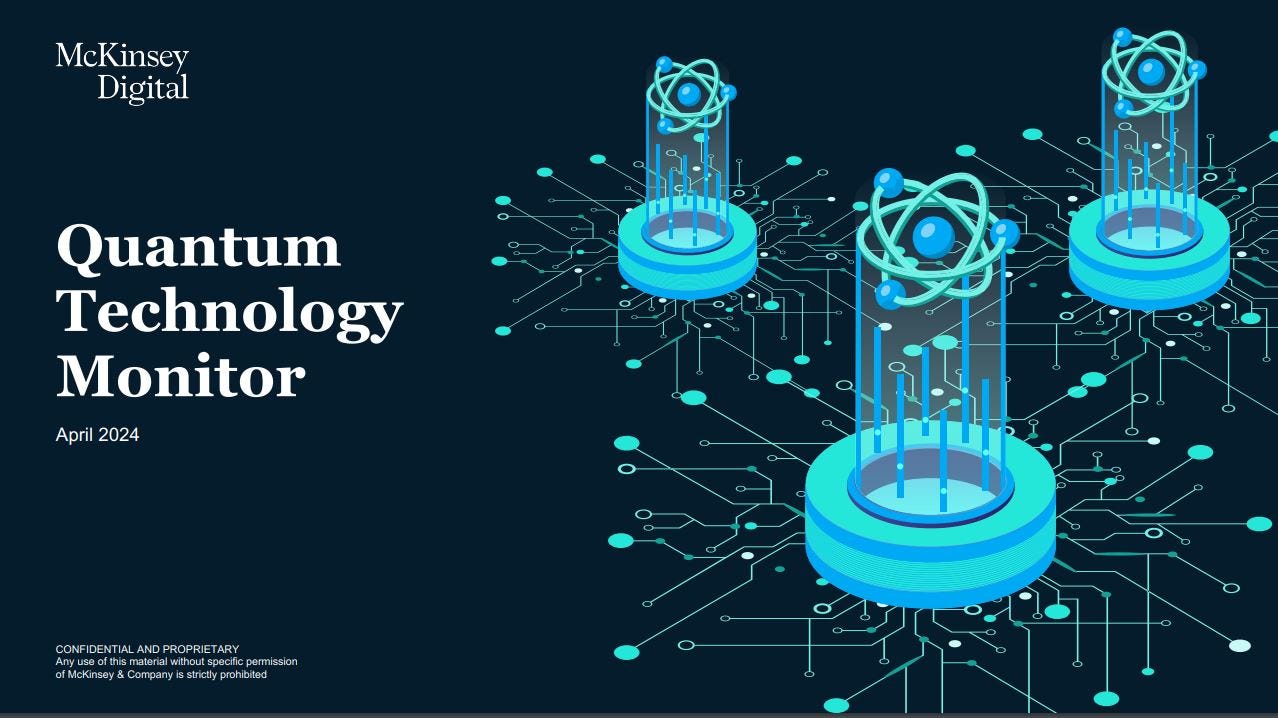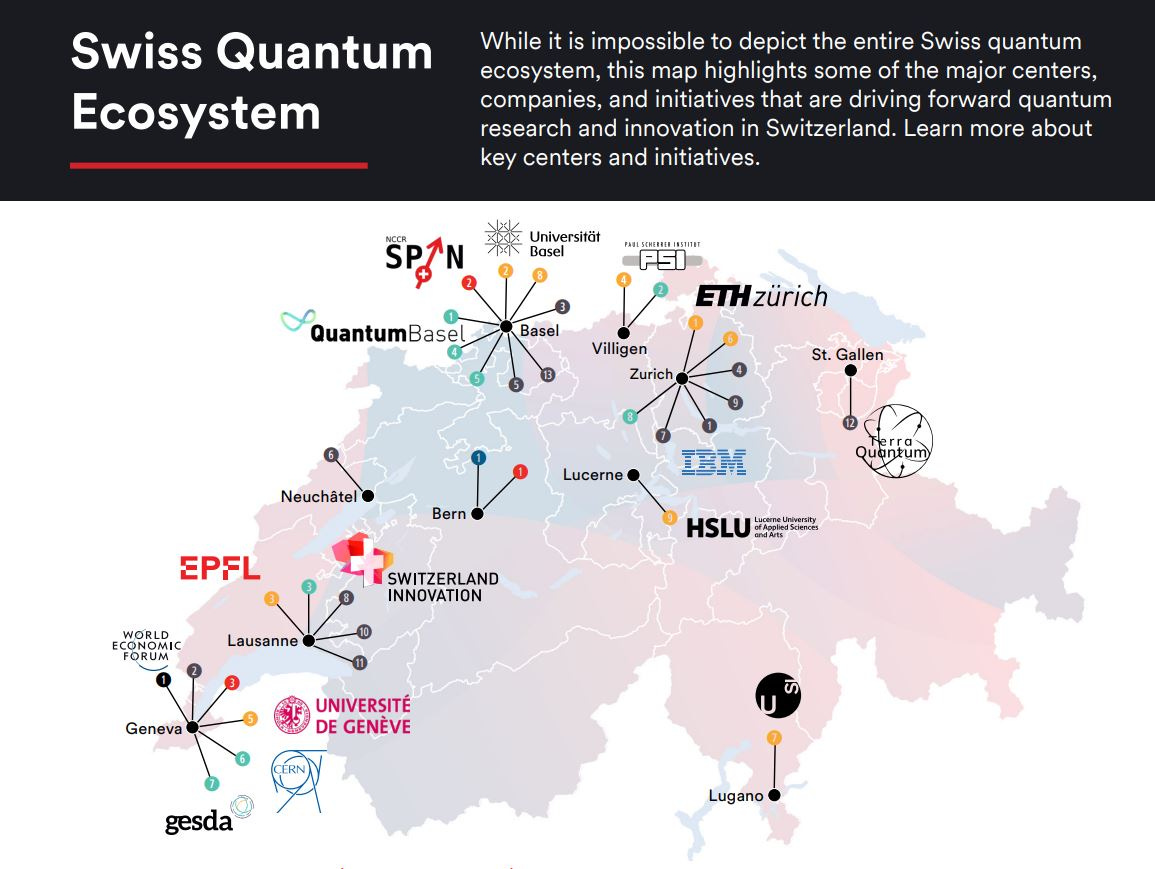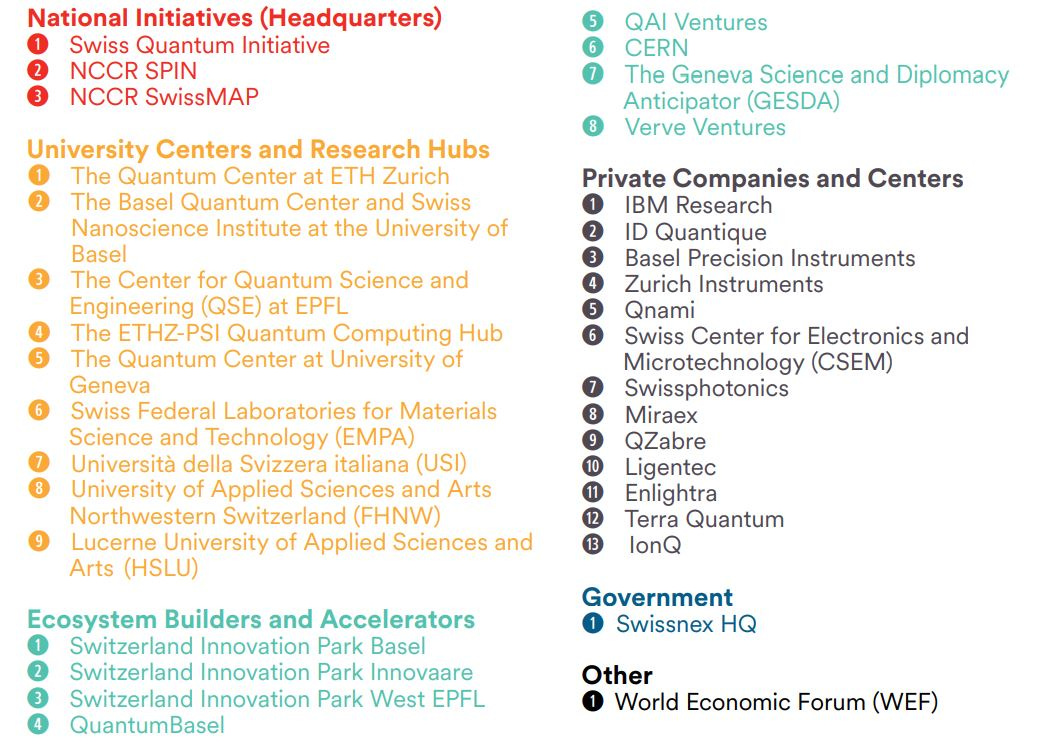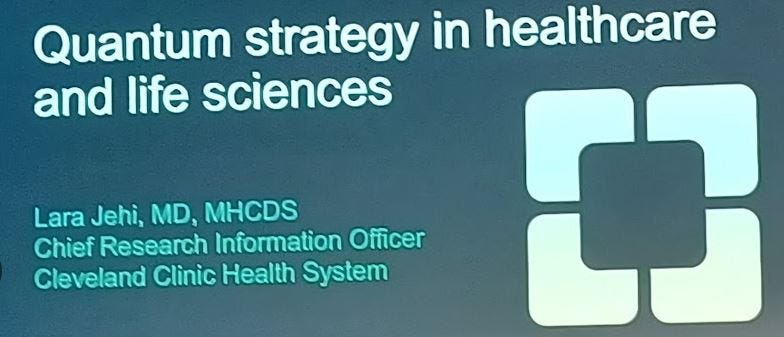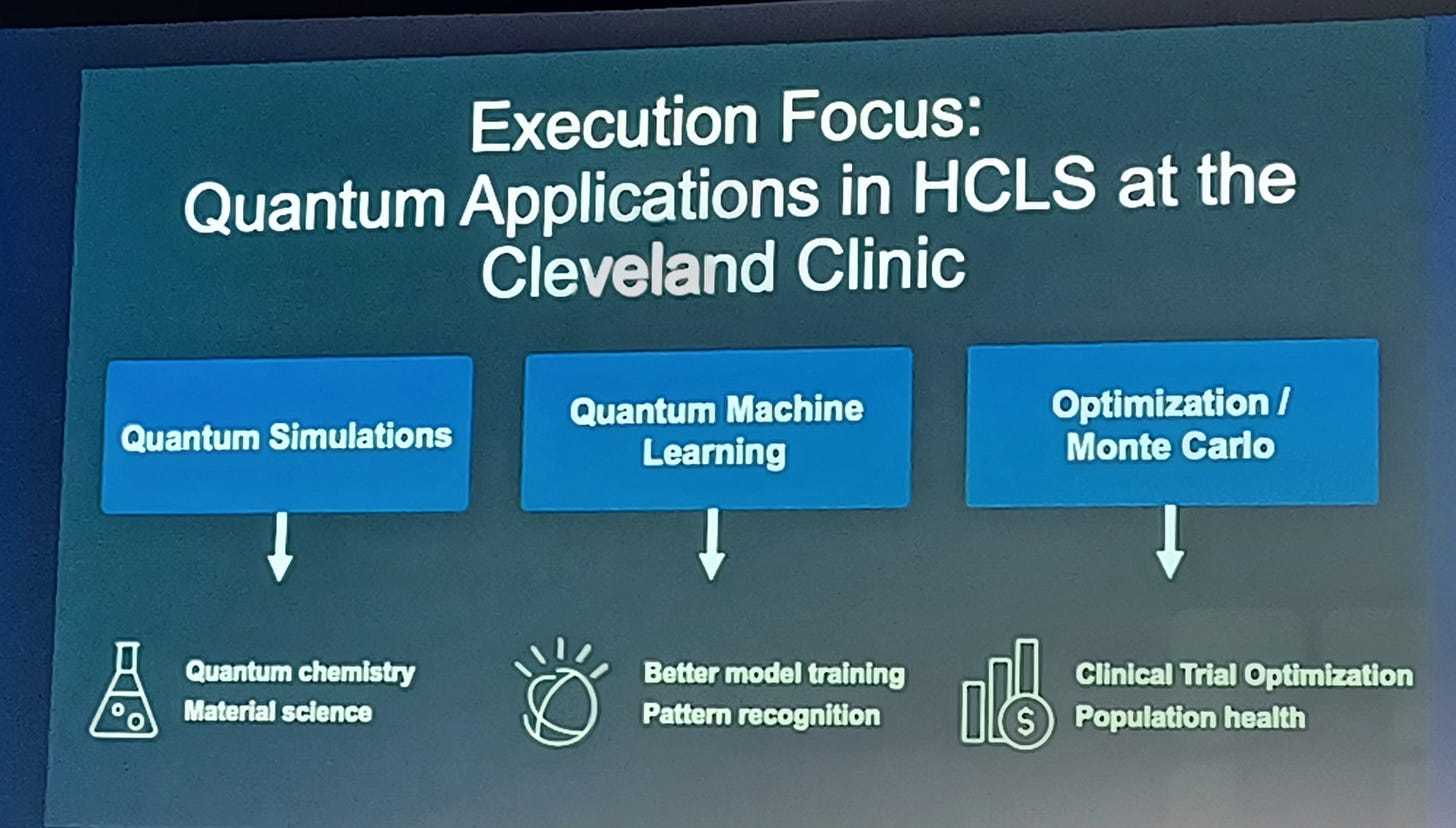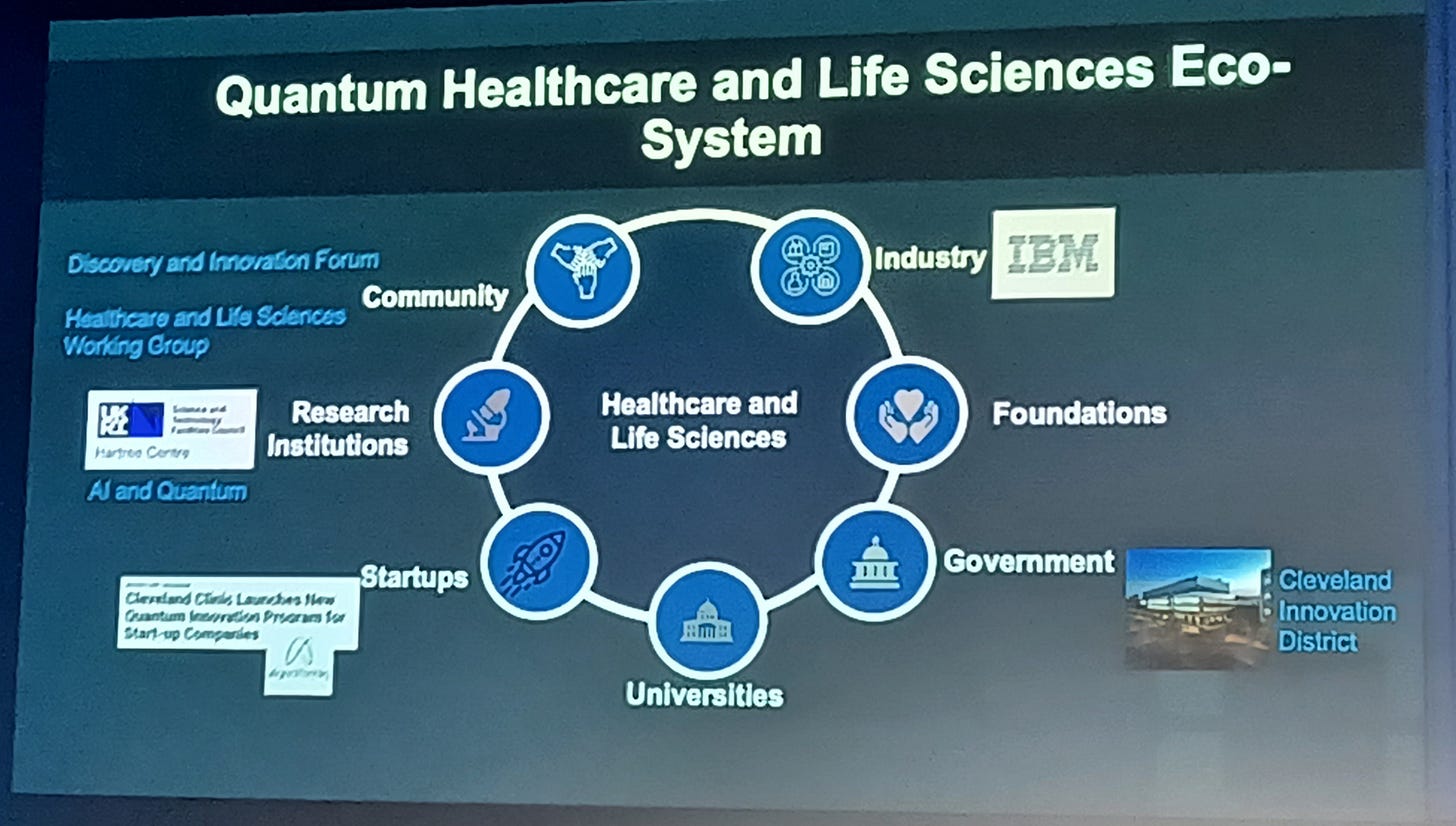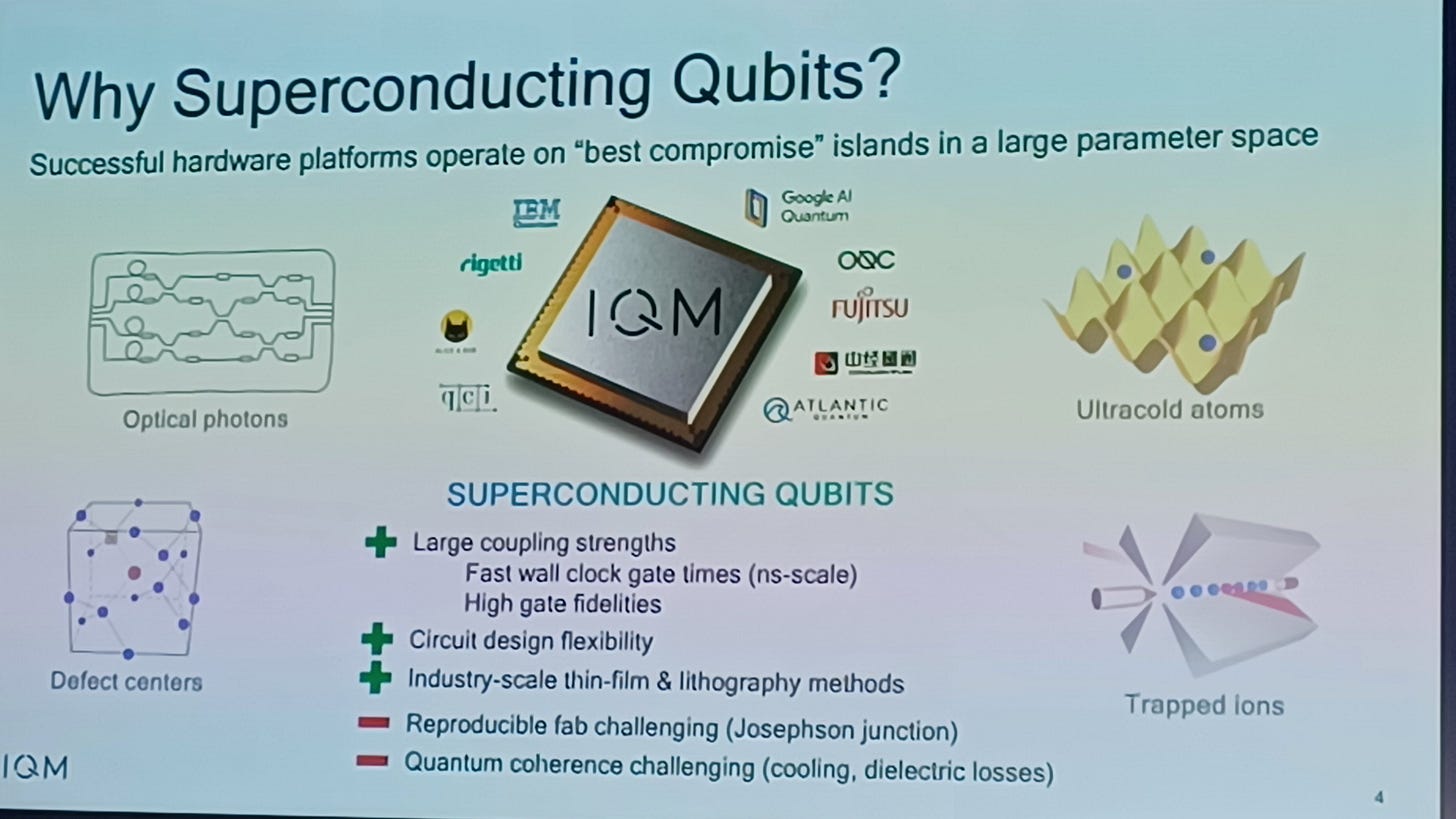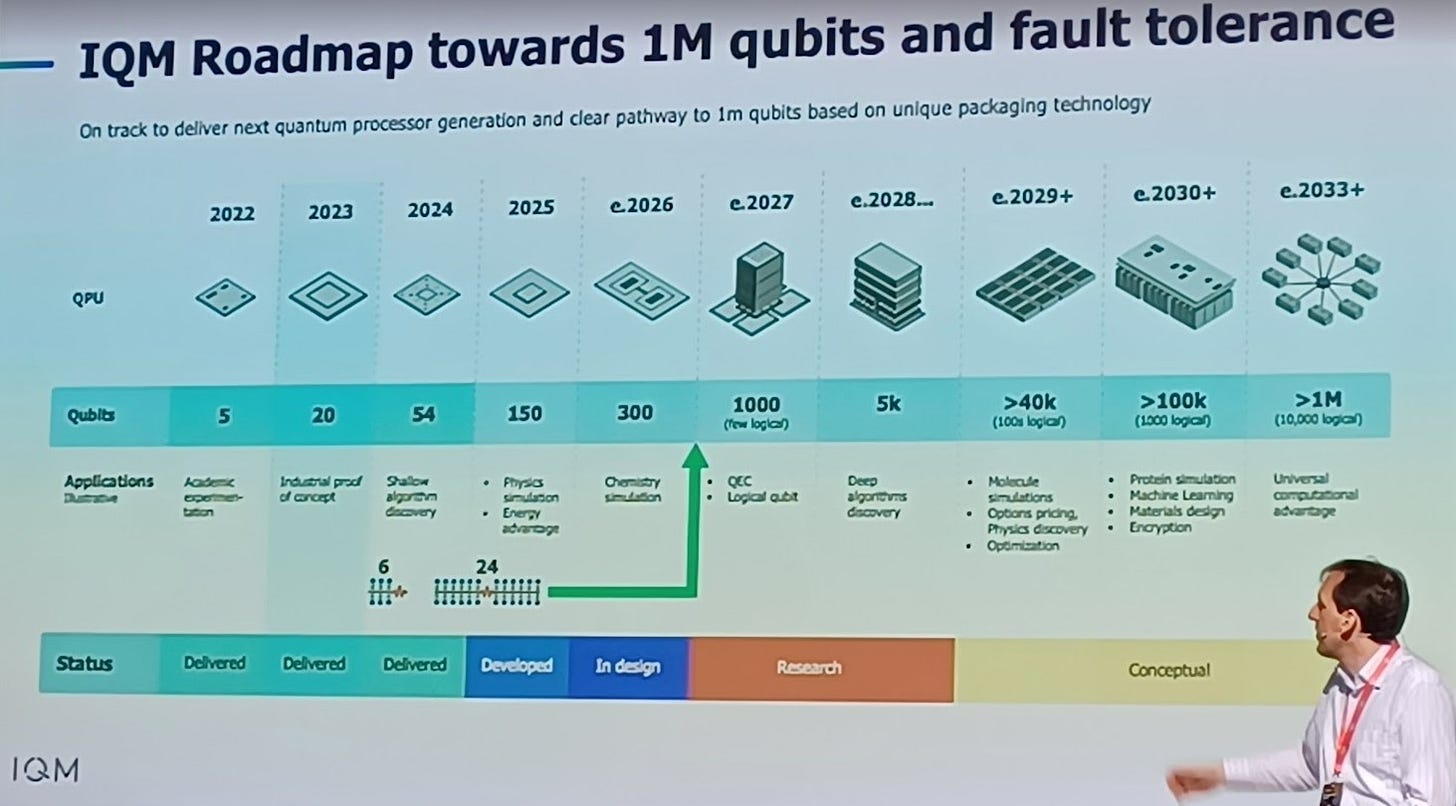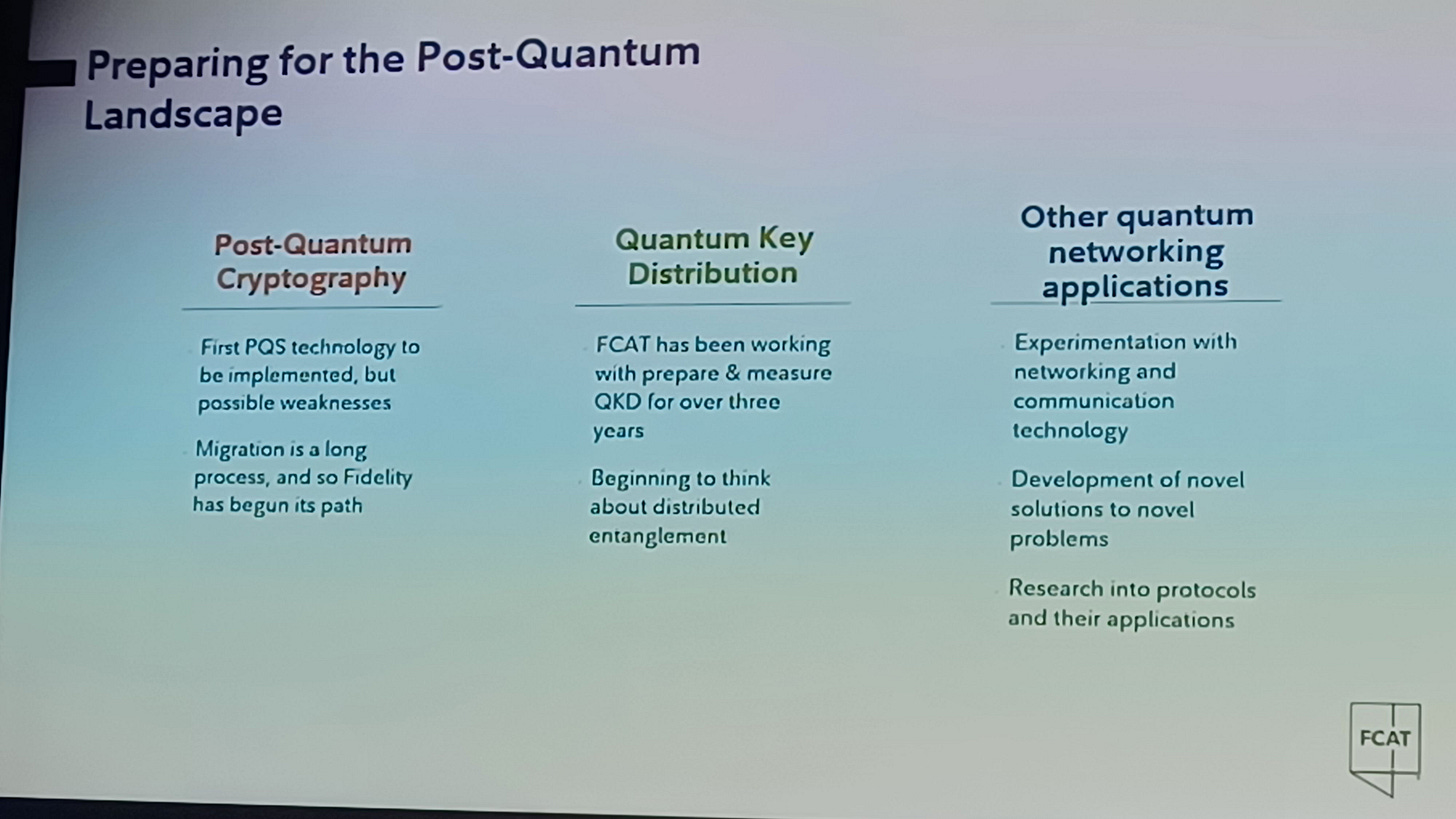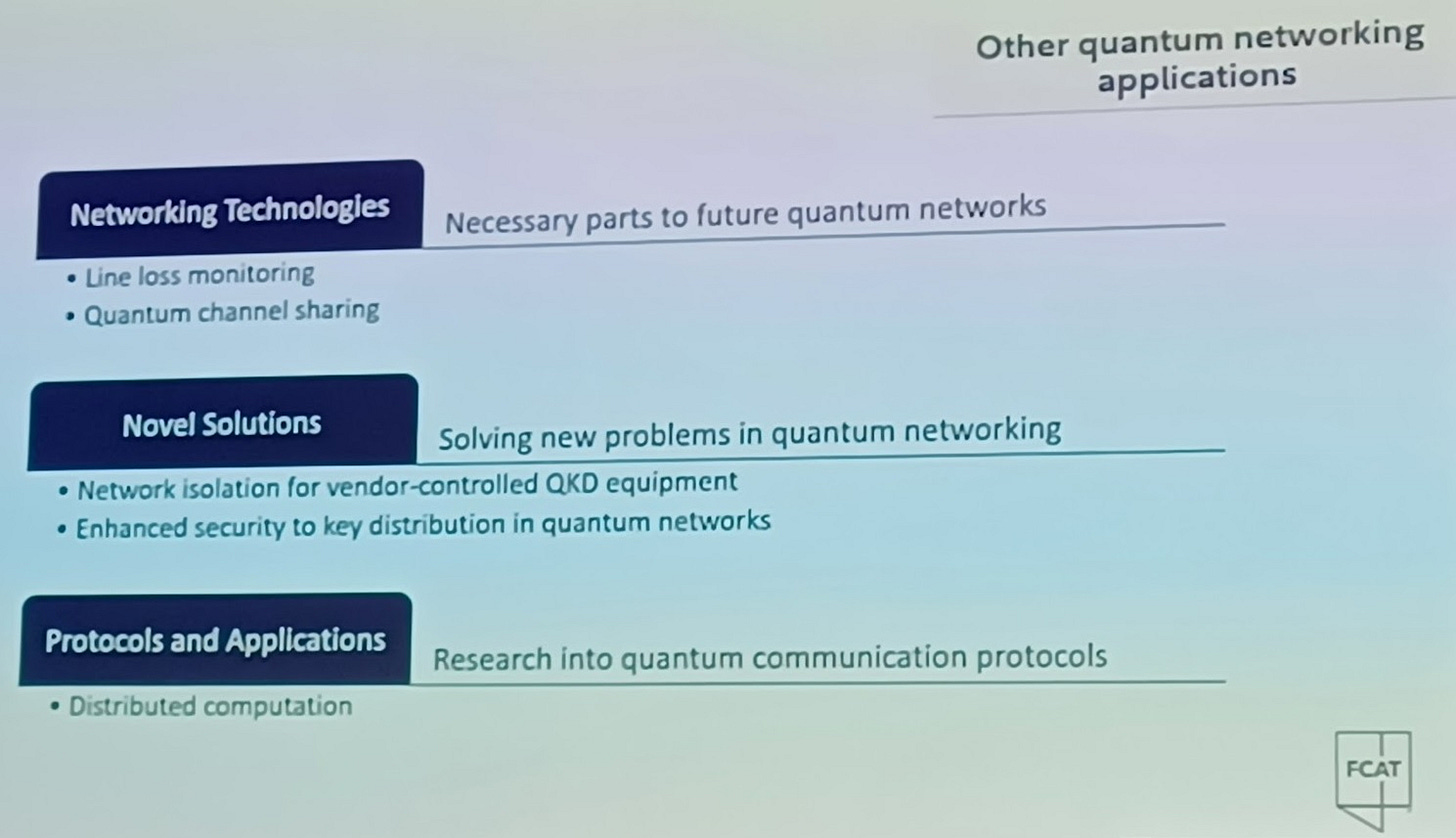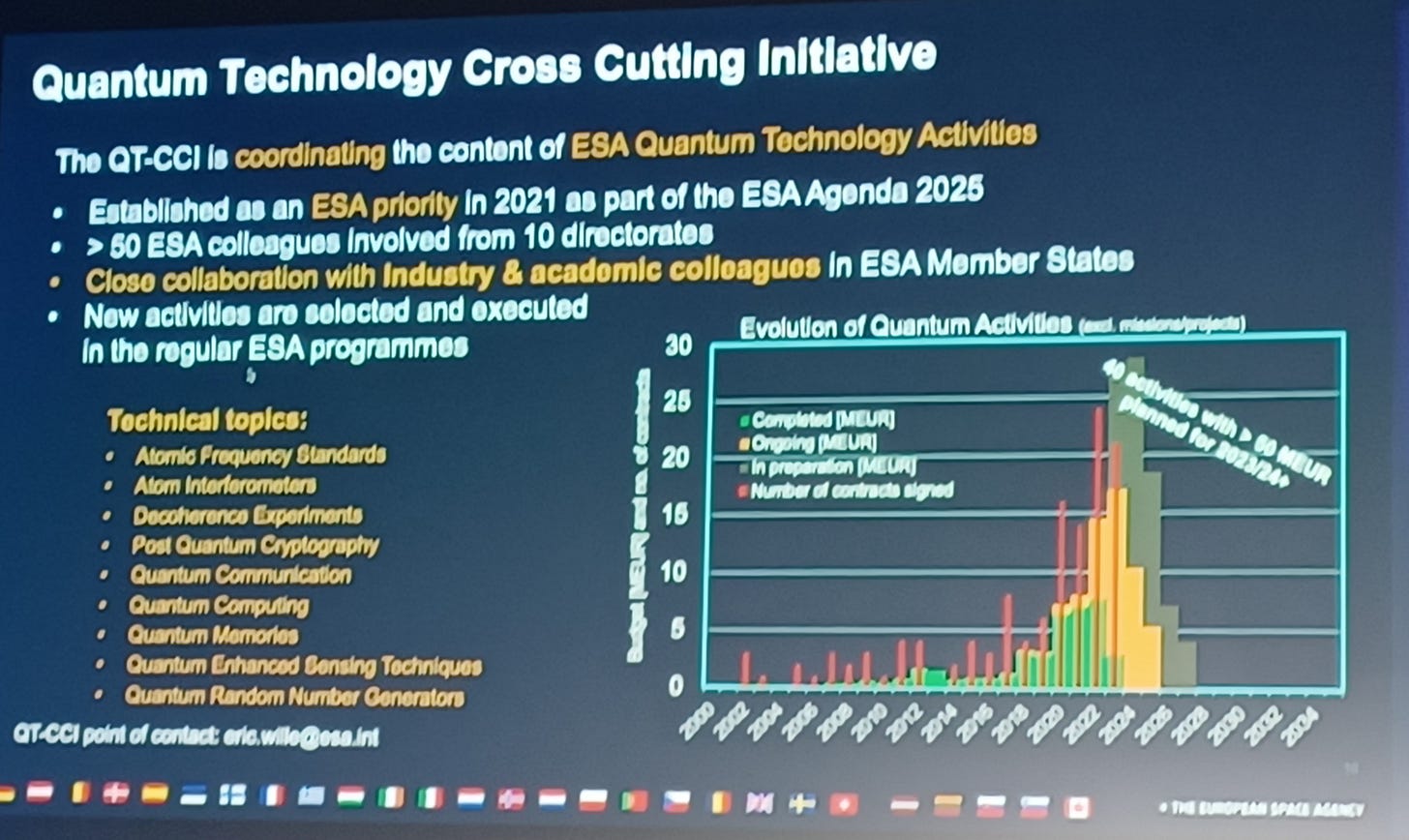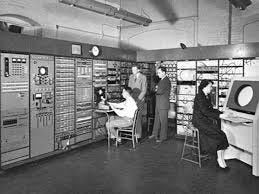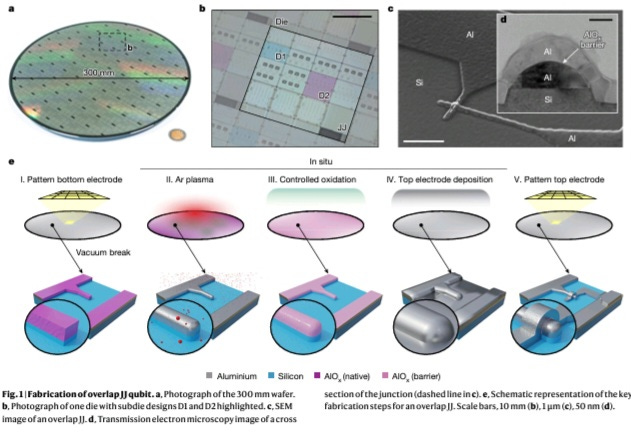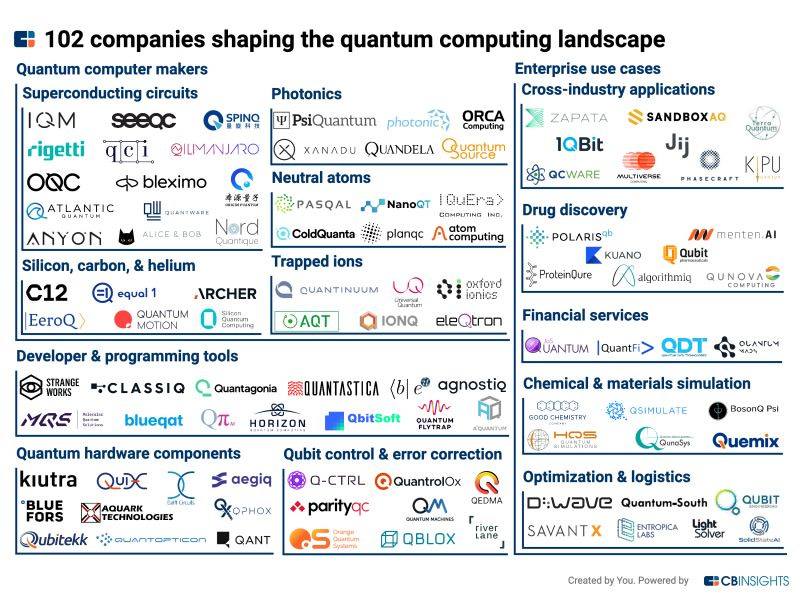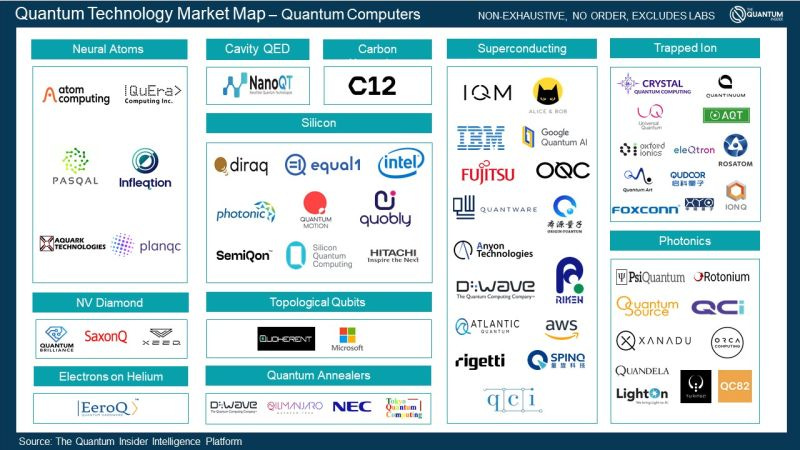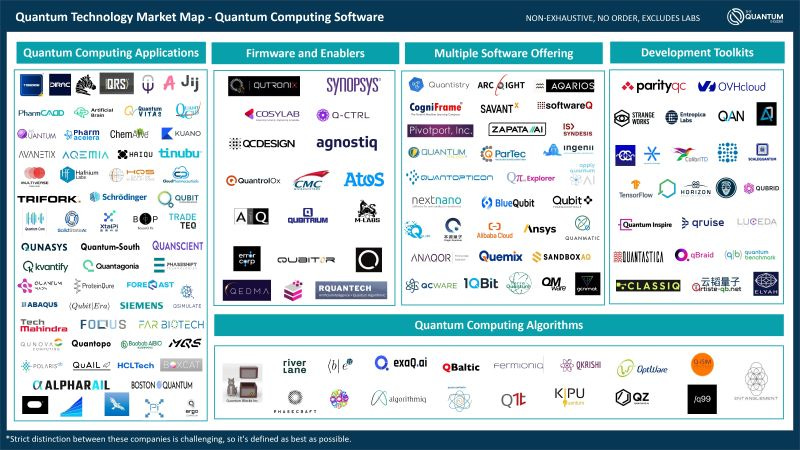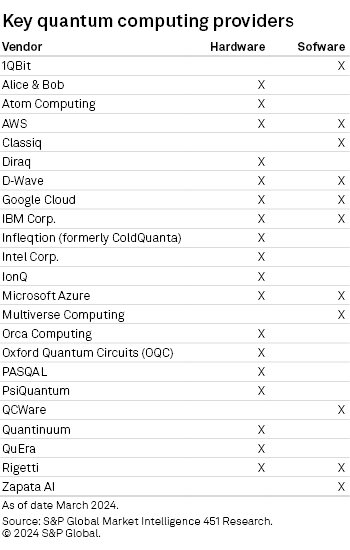Quantum Industry Day 2024 in Switzerland
A brief comment about Quantum Computing state-of -art during the Conference
Last monday I have joined this important international conference in Basel to have an update about Quantum Computing state-of -art
The event was perfectly organized with more than 500 participants worldwide (academics, companies, startup and a lot of students ready for Quantum revolution !)
The location is a new quantum & Ai impressive ecosystem build up in Basel in uptown Basel
with partecipation and partneship of most important public and private in Quantum space : Zurich Instruments, IBM Research, idquantique europe, CSEM, NCCR SPIN: Spin Qubits in Silicon, Euresearch, Quantum Center, ETH Zurich, Swiss Quantum Initiative, Innosuisse, Swissmem, & EPFL Center for Quantum Science and Engineering (QSE). Hosted by QuantumBasel and uptownBasel.
Quantum Technology and its Challenges
Maturity of technological options in Quantum Computing, Quantum Sensing and Quantum Communication → industry readiness?!
Progress observed in technology breakthroughs, particularly in fault-tolerant quantum computing, ...
Private investment dropped while public investment surged, with a focus on scaling established start-ups
With quantum talent growing, countries need to focus on broad collaborations to build strong capabilities
Estimated WW-market value up to $2 Trillion by 2035
See also: McKinsey & Company '3rd annual Quantum Technology Monitor', April 24
The image titled "Swiss Quantum Ecosystem" clearly illustrates Switzerland's pivotal role in the global quantum computing space. The map highlights a network of key research institutions, companies, and initiatives spread across the country, showcasing Switzerland’s commitment to quantum technology innovation.
Major centers like **ETH Zurich** and **EPFL** (École Polytechnique Fédérale de Lausanne) stand out as hubs of cutting-edge quantum research. Additionally, partnerships with global tech leaders like **IBM** demonstrate Switzerland’s integration into the international quantum computing ecosystem. The inclusion of important quantum research centers such as **CERN** in Geneva and the **Paul Scherrer Institute (PSI)** further emphasizes the nation's strength in fostering scientific breakthroughs.
The map also indicates the presence of organizations like **QuantumBasel** and initiatives like **Terra Quantum**, which highlight how Switzerland is not only advancing research but also fostering a robust quantum startup and innovation ecosystem. Moreover, the support from key international institutions such as the **World Economic Forum** and initiatives like **Switzerland Innovation** indicates that the country is shaping the future of quantum technology with strong public-private partnerships.
All these factors combine to make Switzerland a major hub for quantum computing, driving both technological advances and fostering a global collaborative environment essential for quantum innovation. The presence of high-level talent, cutting-edge infrastructure, and supportive initiatives positions Switzerland as a leader in the global quantum landscape.
Quantum Strategy in healthcare and life science
An important use case shared during the conference was the application of Quantum Computing in Cleveland Clinic for many life science problems :
This ecosystem highlights the collaborative efforts across various sectors—industry, academia, government, and startups—aimed at harnessing the power of quantum computing to advance the healthcare and life sciences industries, ensuring that innovation is both rapid and impactful.
Superconducting Qubits by IQM
Quantum technology stacks, particularly in quantum computing, are built around different hardware approaches. These approaches are based on different ways of creating and controlling **qubits**, the fundamental units of quantum information. Below are some of the primary hardware approaches in quantum technology stacks:
1. **Superconducting Qubits**
- **How it works**: Superconducting qubits rely on circuits made from superconducting materials that carry electric current without resistance when cooled to extremely low temperatures. Qubits are formed by manipulating the energy states of these circuits.
- **Example**: Companies like **IBM** and **Google** use this approach. IBM's **Qiskit** and Google's **Sycamore** processor are based on superconducting qubits.
- **Advantages**:
- Mature technology with high scalability potential.
- Strong development ecosystem (e.g., error-correction protocols).
- **Challenges**: Requires complex refrigeration systems to operate at near absolute-zero temperatures (millikelvin range).
2. **Trapped Ion Qubits**
- **How it works**: This method uses ions (charged atoms) trapped in electromagnetic fields. Qubits are encoded in the energy states of these ions and manipulated using lasers.
- **Example**: Companies like **IonQ** and **Honeywell** are developing trapped-ion systems.
- **Advantages**:
- Long coherence times (qubits remain stable for longer).
- High fidelity in qubit operations.
- **Challenges**: Scaling up trapped ion systems for many qubits is more difficult due to their physical complexity and slower gate speeds compared to superconducting qubits.
3. **Photonic Qubits**
- **How it works**: Photonic systems use particles of light (photons) as qubits. These qubits can travel over long distances, making them ideal for quantum communication. Photonic qubits are manipulated using beam splitters, phase shifters, and other optical components.
- **Example**: Companies like **PsiQuantum** are focused on building large-scale quantum computers using photons.
- **Advantages**:
- Photons are less prone to environmental noise, allowing for stable, long-distance communication.
- Room temperature operation.
- **Challenges**: Creating scalable and efficient photonic quantum gates is technically challenging.
4. **Topological Qubits**
- **How it works**: This theoretical approach involves using **anyons**, exotic quasi-particles that exist in two-dimensional space, which can store information in their "braiding" or "knotted" states. These qubits are protected from errors by the topology of their configuration.
- **Example**: **Microsoft's Azure Quantum** is heavily invested in developing topological qubits.
- **Advantages**:
- Theoretically promises more robust error protection and fault tolerance, potentially reducing the need for complex error-correction codes.
- **Challenges**: Topological qubits have not yet been demonstrated at a scale needed for practical quantum computing.
5. **Neutral Atom Qubits**
- **How it works**: Neutral atom quantum computing involves trapping individual neutral atoms in optical tweezers and using lasers to manipulate their states. The neutral atoms act as qubits.
- **Example**: **ColdQuanta** and **Pasqal** are pursuing neutral atom-based systems.
- **Advantages**:
- Naturally scalable, as large numbers of neutral atoms can be manipulated.
- High connectivity between qubits.
- **Challenges**: Manipulating and maintaining the precise arrangement of atoms in optical traps is complex.
6. **Silicon-based Qubits (Quantum Dots)**
- **How it works**: Silicon quantum dots use the spin states of electrons or nuclei confined in tiny regions of a silicon substrate to represent qubits. This method leverages conventional semiconductor technology.
- **Example**: **Intel** and **HRL Laboratories** are exploring this approach, with a focus on leveraging existing silicon fabrication techniques.
- **Advantages**:
- Potential for integration with current semiconductor manufacturing processes, which could accelerate scalability.
- Compatibility with existing chip manufacturing infrastructure.
- **Challenges**: Controlling qubit interactions and coherence times are still being refined.
7. **Spin Qubits**
- **How it works**: Spin qubits use the quantum state of an electron’s spin (either up or down) to store information. This approach typically requires quantum dots or donor atoms in silicon.
- **Example**: Researchers at institutions like **University of New South Wales** and companies like **Intel** are working on spin-based qubits.
- **Advantages**:
- Potential for longer coherence times and use of conventional semiconductor materials.
- Room-temperature operation in some cases.
- **Challenges**: Precision control over individual spins and interactions is difficult to achieve at scale.
8. **Diamond NV Centers (Nitrogen-Vacancy Centers)**
- **How it works**: This approach uses defects in a diamond's crystal structure, specifically nitrogen-vacancy centers, to create qubits. The NV center in the diamond can store quantum information in the spin state of its electrons.
- **Example**: **Element Six** and **Quantum Brilliance** are exploring diamond-based quantum computing.
- **Advantages**:
- Room-temperature operation.
- High stability and long coherence times in certain settings.
- **Challenges**: Scaling to large systems remains an obstacle.
9. **Quantum Annealing**
- **How it works**: Quantum annealing is a specialized form of quantum computing aimed at solving optimization problems. Qubits are arranged in a way that represents the problem space, and a quantum process is used to find the lowest-energy configuration, which corresponds to the solution.
- **Example**: **D-Wave** is a leader in quantum annealing technology.
- **Advantages**:
- Good for specific problems like optimization and machine learning.
- **Challenges**: Limited to specific use cases and not suitable for universal quantum computing tasks.
The solution offere by IQM are based on Superconducting technology
adopting a specific software library based on a solid roadmap to reach 1M qubits :
Preparing for the Post-Quantum Landscape
Advancements in quantum technologies and the need for forward planning to secure data and communications against potential threats posed by quantum computers. It shows that significant work is already underway in areas like post-quantum cryptography and quantum key distribution, but also underscores that the full transition to quantum-resilient systems will take time and require ongoing research and experimentation.
This slide emphasizes that as quantum networks evolve, both technological innovations and novel security solutions will be critical to ensuring their effectiveness and resilience. The focus on line loss monitoring and quantum channel sharing highlights the practical aspects of building reliable networks, while network isolation and enhanced security reflect the need to secure these systems as they scale. The exploration of distributed computation through new protocols suggests a future where quantum networks could enable groundbreaking new applications in computing, communication, and data security.
Quantum Applications for Space
Quantum Applications for Space represent a cutting-edge convergence of quantum technologies with the space sector, offering transformative capabilities in areas like communication, sensing, and computing. The unique environment of space, with its vacuum conditions and vast distances, makes it an ideal testing ground for certain quantum phenomena, such as quantum entanglement and superposition. By leveraging these properties, quantum technologies have the potential to revolutionize space missions, satellite communications, and space-based sensing systems.
Key Quantum Applications for Space:
Quantum Communication: Space-based quantum communication systems, such as quantum key distribution (QKD) via satellites, can provide ultra-secure communication channels over vast distances, well beyond the limits of terrestrial networks.
Quantum Sensing: Quantum sensors, which exploit quantum properties for ultra-sensitive measurements, can enhance the accuracy of navigation, gravity mapping, and Earth observation missions. These sensors could help in detecting minute changes in gravitational fields or magnetic anomalies in space exploration.
Quantum Computing in Space: Deploying quantum computers in space can allow for rapid on-site data processing during missions, reducing the need for constant communication with Earth. It could also enable real-time analysis of large datasets, like astronomical observations, with unprecedented computational power.
Relation to Quantum Networking:
As space-based quantum applications grow, quantum networks will become essential for linking ground stations with satellites, facilitating distributed quantum communication and computing. Technologies like line loss monitoring and quantum channel sharing, as highlighted in the slide, will play a vital role in ensuring the reliability of these quantum links in the harsh space environment.
The programme in next years
In summary, quantum technologies in space open up new frontiers for secure communication, precise measurements, and powerful computation, aligning perfectly with the advances in quantum networking technologies necessary to support these missions. These developments could lead to a quantum leap in space exploration and satellite operations.
Quantum Chip : the next level to access quantum computing for all devices
Quantum computing today can be likened to the era of mainframe computers in the mid-20th century. Just as mainframes were large, expensive, and accessible mainly to institutions and large corporations, current quantum computers are similarly exclusive in terms of accessibility and cost. These quantum systems are typically housed in specialized facilities, requiring delicate handling and sophisticated cooling mechanisms due to their sensitivity and the complexity of quantum state management.
This month was released on NATURE magazine this paper that will change completely hardware to product mass quantum chip
Advanced CMOS manufacturing of superconducting qubits on 300 mm wafers
This abstract discusses the advancements in the development of superconducting qubit technology, which is crucial for building practical quantum computers. As quantum processors grow more complex, precise fabrication methods become increasingly important. The study highlights the use of advanced industrial fabrication processes, specifically in a 300 mm CMOS pilot line, to create superconducting transmon qubits. These methods achieve relaxation and coherence times exceeding 100 microseconds, demonstrating the effectiveness of using industrial techniques to maintain high performance while allowing for large-scale production. The results show consistent across-wafer coherence, yield, variability, and aging statistics, supporting the viability of this approach. Unlike traditional lab-based methods that use complex techniques like metal lift-off and electron-beam writing, this new method relies only on optical lithography and reactive-ion etching. This development not only aligns with current manufacturing standards but also opens possibilities for further scaling and optimization in the fabrication of quantum computing processors.
What is the investment landscape by country ?
QURECA has analyzed the global quantum effort leading to research and innovation in quantum science and technology is continually rising with current worldwide investments exceeding $40 billion.
Overall, the global quantum technology market is projected to reach $106 billion by 2040
Meantime CBINSIGHTS show the impact on full stack in Quantum space for companies during 2024
and many quantum functions already enabled analyzed by The Quantum Insider
wtih the list of most important providers
Conclusion
As we stand on the brink of a new era in computing, the transformative potential of quantum technology is becoming increasingly apparent. The state of the art in quantum computing has reached a pivotal point where foundational theories are now being translated into tangible technologies that promise to revolutionize a multitude of industries. Despite significant advancements, the full commercial potential of quantum computing remains largely untapped, poised to offer groundbreaking solutions to some of the most complex challenges in business today.
The journey from experimental setups to robust, industry-ready platforms is fraught with technical hurdles, yet it is clear that quantum computing will likely influence sectors such as pharmaceuticals, materials science, finance, and cybersecurity. Businesses that anticipate and invest in quantum capabilities now are setting the stage for a competitive edge that could redefine market dynamics.
However, for quantum computing to move beyond the confines of research labs and into the boardrooms, collaboration between researchers, engineers, and business leaders is essential. Such partnerships will be crucial in developing the frameworks and standards needed to harness this technology safely and effectively. Additionally, a focus on developing quantum-literate talent and proactive regulatory environments will be fundamental in supporting the transition of quantum technologies from the lab to the marketplace.
In conclusion, while the full scope of quantum computing's impact on business remains to be seen, the technology holds profound potential to create new value, drive innovation, and transform entire industries. The businesses that recognize and adapt to the nuances of quantum computing today will likely be at the forefront of tomorrow’s technological landscape, pioneering applications that are as yet unimagined.
If you want read real-time update on Quantum Computing space news and updates follow our profile on X @YouSolidLedger






